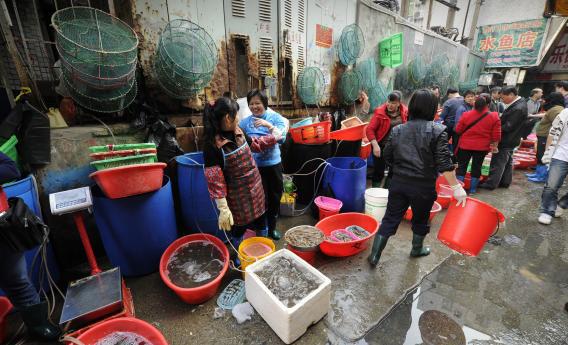Via Guan Yang, comes the point that an iPhone assembly job isn’t really a job you’d want to have and that the high-value elements of the iPhone process are firmly housed here in the United States. This is true, but it’s one reason I think it’s interesting to ask what happens if you move the workers along with the factory. Even if precisely zero native-born Americans were employed in the iPhone assembly plant, this would have other implications along the supply chain. Consider, for example, the case of Corning’s Gorilla Glass. This is something the company invented decades ago, but there was little demand for until Steve Jobs decided he wanted it for iPhones. Since that time, global demand for Gorilla Glass has expanded enormously thanks to the popularity of touchscreen phones, and there are currently more Americans employed producing it than ever before. But even though some Gorilla Glass is made in America, most of it is made in Asia, primarily because that saves on transportation costs. If the assembly is done in Sheboygan rather than Shenzhen, then this is more glass-making for the USA and apparently conditions and pay in Corning’s factories are such that Americans do in fact want those jobs.
Now there are a lot of points you can make about this, ranging from China’s lack of labor-law protections to their exchange rate manipulation and all the rest. But if you take the long view of world history, you’ll see that the question that needs explaining isn’t “why is so much stuff happening in Asia” but rather “why is so little stuff happening in Asia.” For most of human history, Asia is where all the action is since Asia is where all the people are. For stuff to happen, you need people to do the stuff. And once stuff starts happening, there are all kinds of spillovers and agglomeration effects and more and more stuff is happening. Various sad occurences in Asian (and especially Chinese) history in the 19th and 20th centuries created a temporally localized situation in which Asia became a bit of a backwater despite everyone living there. But for decades now, dating back to long before smartphones or the personal computer, the hub of human existence has been catching up. That was postwar Japan and then South Korea. It was the “Asian Tigers” of the 1990s. The biggest city in the world has been Tokyo for a long time now. The GDP per capita of Singapore now exceeds that of San Francisco. This is more or less the natural fallout of Asia, where all the people live, not being conqured by foreigners or attempting to implement Maoist economics.
There’s no getting around the fact that, in the long term, most of the good new ideas will be thought up where most of the people are or that there will be an advantage to locating production where most of the customers are. You can buck these trends with better public policy, but “better” public policy is a relative concept and you can’t guarantee that other countries will implement terrible policies simply because it’s convenient for you. Now this can be fine. New Zealand is, by all accounts, an extremely pleasant place to live. You don’t exactly “win the future” with an economy oriented around the export of dairy products, meat, wood, and fish but New Zealand’s population is really rich. Much richer than China’s. And as long as New Zealand stays well-governed, New Zealand will stay pleasant and prosperous. But over the whole long arc of the past 100 years, it’s never been possible for New Zealand to “out-compete” the United States as a center of innovation for the simple reason that nobody lives in New Zealand.
